Welcome to the definitive resource on 5 Axis CNC routers, the cutting-edge technology that’s revolutionizing manufacturing and precision engineering. Whether you’re a seasoned machinist, a business owner aiming to optimize production, or simply curious about advanced machining capabilities, this guide is tailored to provide you with everything you need to know.
We’ll explore the unparalleled versatility, efficiency, and innovation these machines bring to various industries—from aerospace to furniture design. You’ll gain insights into how 5 Axis CNC routers work, their core advantages over traditional routers, and the tangible benefits they offer. By the end of this guide, you’ll have a clear understanding of why this technology is becoming a game-changer for contemporary manufacturing.
What is a 5 Axis CNC Router and How Does it Work?
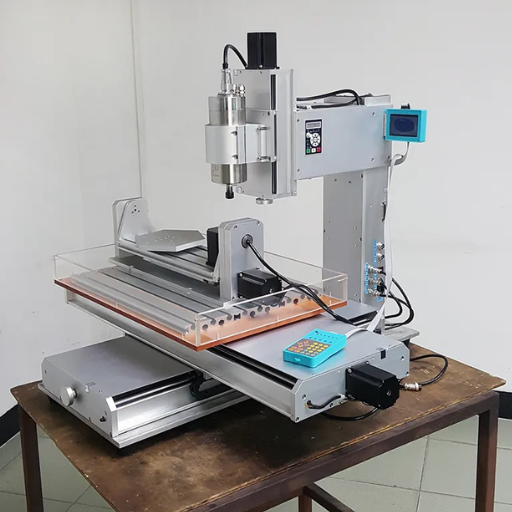
A 5 Axis CNC Router is an advanced machine tool used to cut, shape, and mill materials with unparalleled precision. Unlike traditional routers that operate on three axes (X, Y, and Z), a 5 Axis CNC Router adds two additional rotational axes. These extra axes allow the tool to approach the material from virtually any angle, enabling the creation of highly intricate and complex designs.
The router works by following pre-programmed instructions from computer software, which guides the tool’s movements to shape materials like wood, metal, or plastic. The five axes provide more flexibility and efficiency, reducing the need for manual repositioning of the material. This makes 5 Axis CNC Routers a critical tool for industries that demand precision and innovation, such as aerospace, automotive, and industrial design.
Understanding the Basics of a CNC Router Machine
A CNC router machine consists of several key components that enable its high level of accuracy and efficiency. These include the spindle, drive system, controller, frame, and cutting bed. The spindle is the motorized component responsible for rotating the cutting tool, which performs the material shaping. The drive system, typically powered by stepper or servo motors, ensures precise movement along the toolpaths. The controller acts as the “brain” of the machine, interpreting design files and converting them into actionable instructions for movement and cutting. The frame and cutting bed provide structural stability and support for the material being machined.
Modern CNC routers can achieve remarkable levels of precision, with tolerances often measured in micrometers. For example, many high-end machines boast repeatability in the range of ±0.01 mm. This precision is crucial for industries where accuracy directly impacts the performance of the final product, such as in aerospace or medical device manufacturing.
Additionally, CNC routers are equipped with advanced software that supports CAD (Computer-Aided Design) and CAM (Computer-Aided Manufacturing) workflows. These systems streamline the process from design to production, allowing for complex 3D models to be accurately replicated in a wide variety of materials. Innovative features, such as automatic tool changers and vacuum tables for securing workpieces, further enhance productivity and reduce downtime.
By leveraging these advanced capabilities, CNC router machines have revolutionized industries that require speed, reliability, and flexibility in manufacturing, making them indispensable in today’s highly technical design landscape.
The Role of Axis in a CNC Machine
The term “axis” in a CNC machine refers to the directions in which the machine can move its tools to shape and work on a material. Typically, these movements are measured in three linear axes—X, Y, and Z. The X-axis represents horizontal movement, the Y-axis corresponds to vertical movement, and the Z-axis deals with depth, allowing precise control in three-dimensional space. Modern CNC machines, such as 5-axis CNC routers, incorporate two additional rotational axes—commonly labeled as A and B—providing unparalleled flexibility and precision in complex machining tasks.
For industries requiring intricate designs or components, the multi-axis capabilities of advanced CNC machines have become indispensable. For instance, according to recent advancements in manufacturing, the aerospace sector heavily relies on 5-axis CNC to produce custom turbine blades and structural components with tolerances as low as ±0.001 inches. These machines eliminate the need for manual repositioning, drastically reducing production time and errors, while enabling simultaneous operations across multiple angles. This efficiency is a driving factor behind the increasing adoption of multi-axis CNC systems in high-stakes industries.
Additionally, the integration of digital systems and CAD/CAM software with CNC machines has further enhanced the role of axes, ensuring precision automation. From contouring complex surfaces to drilling and trimming three-dimensional components, the additional axes empower manufacturers to meet demanding production standards with consistent quality.
Key Components: Spindle, Motor, and Control System
The key components of CNC systems include the spindle, motor, and control system, which collectively ensure precision, power, and operational efficiency.
| Parameter | Spindle | Motor | Control System |
|---|---|---|---|
|
Function |
Rotates tools |
Drives spindle |
Manages operations |
|
Type |
Belt/Motorized |
Electric/Servo |
Open/Closed Loop |
|
Speed |
Up to 60,000 RPM |
Variable |
Adjustable |
|
Torque |
High |
High |
Regulated |
|
Precision |
High |
Moderate |
Very High |
|
Maintenance |
Moderate |
Low |
Low |
|
Cost |
High |
Moderate |
High |
|
Applications |
Cutting/Drilling |
Powering spindle |
Automation |
Why Choose a 5-Axis CNC Router?
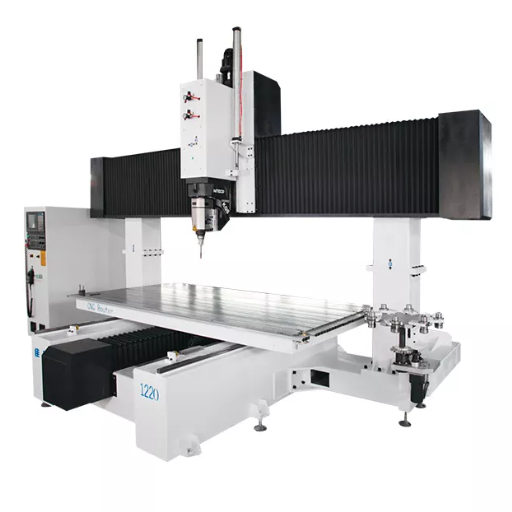
A 5-axis CNC router offers unmatched versatility and precision, making it ideal for complex manufacturing needs. It allows for cutting, shaping, and drilling on multiple surfaces without repositioning the material, saving time and ensuring accuracy. This capability is particularly beneficial for intricate designs and tight tolerances. Additionally, the 5-axis system reduces material waste and increases efficiency, which translates to cost savings over time. Its ability to handle a wide range of materials makes it a go-to choice for industries such as aerospace, automotive, and medical manufacturing.
Benefits Over a 3-Axis CNC Machine
- Enhanced Flexibility and Precision
A 5-axis CNC machine offers superior flexibility by allowing movement along five different axes simultaneously. This eliminates the need for repositioning the material, ensuring highly accurate operations and reducing alignment errors. Studies show that 5-axis machining improves precision by up to 30% compared to 3-axis systems, particularly in complex geometries.
- Reduced Production Time
The 5-axis CNC machine can complete multiple operations in a single setup, significantly cutting down production time. Research indicates that cycle times can be reduced by nearly 25% compared to 3-axis machines, as the operator does not need to manually realign the material for different cuts or angles.
- Capability for Complex Geometries
Unlike a 3-axis machine, which struggles with intricate designs, a 5-axis CNC machine excels at creating complex parts. These machines are ideal for curved surfaces and intricate designs often required in aerospace, medical, and automotive industries. This capability expands design possibilities and enhances product innovation.
- Material Optimization and Waste Reduction
By enabling precise cutting and optimal use of materials, 5-axis machines minimize material waste. Reports show a reduction in material waste by up to 20% when using a 5-axis CNC machine, contributing to both cost benefits and sustainability.
- Broader Range of Material Compatibility
The advanced control and adaptability of a 5-axis system allow the machining of diverse materials, including aluminum, titanium, and high-performance alloys. This gives manufacturers a competitive edge across multiple industries with varying material requirements.
- Cost-Efficiency in the Long Run
Although the initial investment in a 5-axis CNC machine may be higher, its efficiency in reducing waste, lowering operational time, and producing high-precision components leads to substantial long-term savings. Many companies report a return on investment within three years due to these advantages.
By exceeding the capabilities of a 3-axis CNC machine, a 5-axis system not only enhances production quality but also opens the door to new levels of design and efficiency for advanced manufacturing projects.
Applications in Aerospace and Composite Materials
The adoption of 5-axis CNC machining has revolutionized the aerospace industry and the production of composite materials. Given the stringent demands for precision, lightweight structures, and aerodynamic efficiency in aerospace engineering, 5-axis machining enables the creation of complex components such as turbine blades, aircraft fuselage parts, and intricate engine components with unparalleled accuracy and minimal material waste. For instance, the ability to machine parts in a single setup reduces production time significantly while maintaining critical tolerances as low as ±0.005 inches, which is essential for ensuring safety and operational performance in aerospace applications.
When it comes to composite materials, 5-axis CNC machines are particularly valuable due to the unique challenges presented by these materials, such as their varied layering and anisotropic properties. Advanced machining techniques allow precise cutting, trimming, and drilling without causing issues like fiber pullout or material deformation. This precision supports the production of high-performance aerospace components like composite wings and panels, enhancing fuel efficiency due to their reduced weight.
Recent studies have also highlighted significant material optimization and cost savings when employing 5-axis CNC systems. For example, integrated CAD/CAM technologies allow manufacturers to simulate tool paths and optimize material usage, further reducing waste by up to 30% in some cases. The combination of these capabilities makes 5-axis CNC machining an indispensable tool for both aerospace innovation and the advancement of composite material applications.
Importance of Power and Precision in CNC Milling
Power and precision are critical factors in the field of CNC milling, as they directly influence manufacturing efficiency and product quality. High-power CNC milling machines are capable of handling tougher materials like titanium and steel, which are essential for industries such as aerospace and automotive. For instance, modern CNC milling systems with spindle speeds exceeding 20,000 RPM allow for faster material removal and a smoother surface finish, reducing the need for additional processing steps.
Precision, on the other hand, ensures that parts are manufactured with exacting tolerances, often within microns. This level of accuracy is particularly important for components in medical devices, where even the smallest deviation can impact functionality. Advanced control systems and feedback mechanisms in contemporary CNC equipment enable real-time monitoring and adjustments, ensuring consistent accuracy throughout the production cycle.
Furthermore, the integration of adaptive machining technologies has elevated the capabilities of CNC milling. For example, sensors embedded within the milling system can detect tool wear and adjust cutting paths accordingly, improving both precision and longevity. As a result, these advancements not only enhance productivity but also significantly reduce production costs by minimizing material waste and preventing costly errors. The synergy of power and precision in CNC milling is revolutionizing modern manufacturing, driving innovation and maintaining competitive advantages across multiple sectors.
How to Operate a 5-Axis CNC Machine Safely and Effectively?
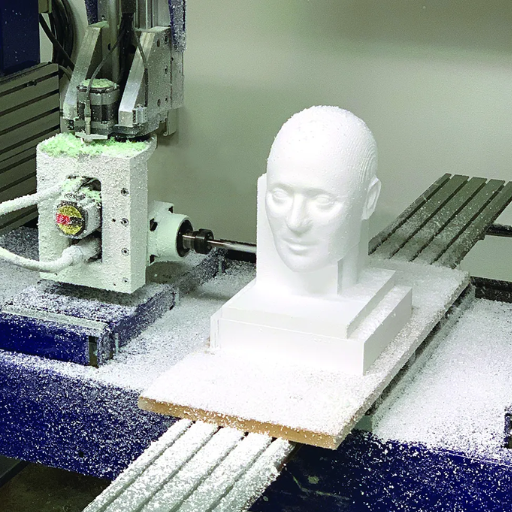
- Perform Pre-Operation Checks
Inspect the machine for any signs of damage or wear. Ensure all tools, fixtures, and materials are securely fastened, and verify that the cutting tools are in proper working condition.
- Understand the Machine Settings
Familiarize yourself with the machine’s controls, software, and programming interface. Double-check the toolpath and parameters before initiating any operation to prevent errors.
- Follow Safety Protocols
Always wear appropriate personal protective equipment (PPE) such as safety goggles and gloves. Maintain a clear workspace, and ensure all safety guards on the machine are fully functional.
- Use Approved Programs and Tools
Load only verified programs and use tools recommended for the specific material and operation. Avoid making unauthorized changes to the program during operation.
- Monitor the Operation
Stay attentive while the machine is running, watching for any signs of unusual noise, vibration, or tool wear. Be prepared to pause or stop the operation if necessary.
- Perform Maintenance Regularly
Clean the machine after each use, and conduct periodic maintenance such as lubrication and calibration to keep it running efficiently and safely.
By strictly following these steps, operators can ensure optimal performance while minimizing the risks associated with 5-axis CNC machining.
Setting Up Your Work Area and Dust Collection
Creating a well-organized and efficient work area is critical for maintaining productivity and ensuring safety. Begin by selecting a location that provides ample space for both the machinery and the operator to move freely and comfortably. Position tools and equipment within easy reach to minimize the risk of accidents and enhance workflow efficiency. Arrange your workbench and shelves to keep commonly used tools in an accessible and clearly visible manner, utilizing wall-mounted storage solutions when space is limited.
When it comes to dust collection, a robust system is essential for improving air quality and maintaining a clean environment. According to industry standards, workshops that handle materials such as wood or metal are at high risk for airborne particulate matter, which can cause respiratory issues over time. Install a high-efficiency dust extractor or central dust collection unit tailored to the size of your workspace. Ensure the system has sufficient suction power, measured in cubic feet per minute (CFM), to adequately capture fine dust and debris produced by your tools. For smaller workshops, portable dust collectors paired with proper filtration systems, such as HEPA filters, are effective alternatives.
Additionally, regularly inspect and maintain your dust collection system by checking for blockages, emptying collection bags, and cleaning filters. Use ductwork with minimal bends and smooth airflow to optimize system performance. By combining proper workspace setup with an effective dust collection strategy, you can create a safer, healthier, and more efficient environment for your projects.
Understanding the Tool Change Process
The tool change process is a critical aspect of machining and manufacturing operations aimed at maintaining efficiency, precision, and safety. It involves replacing a worn or unsuitable tool in a machine with another that matches the specific requirements of the ongoing task. Modern advancements in machining have led to the development of automated tool change systems that significantly reduce downtime and improve productivity.
A typical automated tool changer (ATC) includes a tool magazine or carousel, a tool selection mechanism, and a robotic arm for handling tools. Studies show that automated tool changers can cut tool change time dramatically, often taking as little as 2-8 seconds per change, depending on the system. This efficiency is essential for industries requiring high-volume production with minimal interruptions.
Key factors to consider during the tool change process include ensuring the tool’s compatibility with the machine spindle, measuring tool wear, and securely locking the new tool in place. Proper alignment and balancing are crucial to avoid errors that could impact the quality of the finished product. Regular maintenance of both the tool and the changer system greatly contributes to consistent performance and extended equipment lifespan.
Enhanced techniques such as tool presetters and laser tool measurement have also become prevalent. These technologies allow operators to verify tool dimensions and conditions before installation, ensuring precise machining. Tool presetters alone can increase setup efficiency by up to 25%, according to industry reports, making them an invaluable addition to the tool change workflow.
Overall, an optimized approach to tool changes saves time, enhances precision, and minimizes wear and tear on machinery, leading to improved output quality and operator safety.
Maintaining Reliability for Woodworking Projects
To ensure reliability in woodworking projects, a combination of proper tool maintenance, precise material handling, and adherence to best practices is essential. Regular maintenance of power tools, such as sharpening blades, lubricating moving parts, and checking for electrical issues, significantly extends their lifespan and improves performance. For instance, studies show that blunt tools not only compromise accuracy but also increase the risk of accidents by nearly 40%.
Equally important is the quality of materials used. Selecting high-grade, properly dried wood without internal defects minimizes the likelihood of warping or splitting. Statistics reveal that kiln-dried lumber exhibits up to 50% less dimensional instability compared to air-dried alternatives, making it ideal for precision work.
Lastly, practicing proper joinery techniques, such as accurate cutting and seamless fitting, directly impacts the structural integrity of the final product. Advanced woodworking tools, including CNC routers and laser cutters, add precision and repeatability to the process. These technologies can achieve tolerances as fine as 0.1mm, ensuring projects meet professional-grade standards.
By combining tool care, material selection, and advanced techniques, woodworking enthusiasts and professionals alike can maintain high levels of reliability, resulting in durable and aesthetically pleasing creations.
What Are the Key Considerations When Buying a 5-Axis CNC Router?
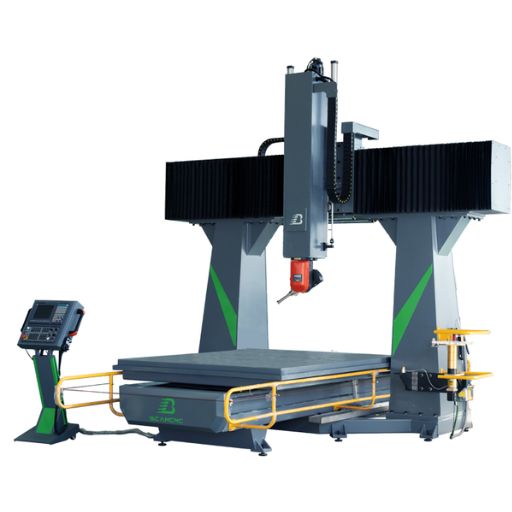
- Precision and Tolerance
Verify the machine’s ability to achieve the level of accuracy required for your projects. A high-quality 5-axis CNC router should provide consistent precision across complex cuts.
- Software Compatibility
Ensure the router is compatible with user-friendly and versatile CAD/CAM software, allowing seamless programming and design import.
- Material Compatibility
Check whether the machine can handle the materials you intend to work with, such as wood, metal, or composites, without compromising performance.
- Size and Workspace Requirements
Consider the dimensions of the router and ensure it fits within your workshop while meeting the size requirements of your projects.
- Ease of Maintenance
Look for features that make cleaning, calibration, and general maintenance straightforward, as this impacts long-term reliability.
- Budget and ROI
Balance upfront costs with long-term benefits, including efficiency gains, reduced material waste, and scalability for future projects.
By carefully evaluating these factors, you can select a 5-axis CNC router that aligns with both your current needs and long-term goals.
Evaluating Machine Tool Specifications
When evaluating machine tool specifications, I focus on factors like precision, speed, and compatibility with the materials I work with. I also ensure the machine meets the production volume demands of my operations and pays close attention to energy efficiency to reduce costs. Maintenance accessibility and reliable manufacturer support are equally crucial to keep downtime to a minimum and maintain productivity. By aligning these considerations with my specific goals, I can make an informed decision that supports both immediate and future needs.
Comparing Industrial CNC vs. Desktop CNC Options
Industrial CNC machines are larger, more powerful, and suited for heavy-duty tasks, while desktop CNCs are compact, cost-effective, and ideal for small-scale precision projects.
| Parameter | Industrial CNC | Desktop CNC |
|---|---|---|
|
Size |
Large |
Compact |
|
Power |
High |
Moderate |
|
Cost |
Expensive |
Affordable |
|
Precision |
High |
Very High |
|
Material |
Hard |
Versatile |
|
Use Case |
Heavy-duty |
Small-scale |
|
Automation |
Advanced |
Full |
|
Maintenance |
High |
Low |
|
Skill Need |
Moderate |
High (Software) |
|
Flexibility |
Limited |
High |
Determining the Right Router Bit for Your Needs
When determining the right router bit for my needs, I consider the material I’ll be working with, the type of cuts I aim to achieve, and the overall quality of the finish I require. For example, if I’m cutting hardwood, I’ll choose bits designed for durability and precision under tougher conditions. I also evaluate the bit’s shank size to ensure it fits my CNC router and delivers optimal performance. Additionally, selecting the proper bit geometry, such as upcut or downcut, depends on whether I need to prioritize a clean edge or efficient chip removal. By aligning these factors with my specific project requirements, I can confidently select the most effective router bit.
How Does Five-Axis CNC Machining Impact Modern Manufacturing?
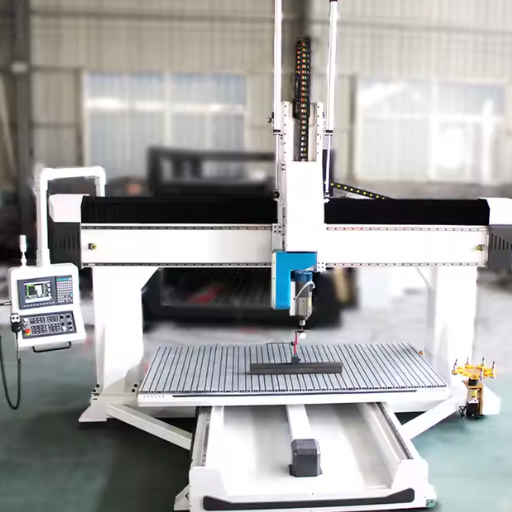
Five-axis CNC machining significantly enhances modern manufacturing by enabling greater precision, efficiency, and versatility. Unlike traditional three-axis machines, five-axis CNC machines allow simultaneous movement along five different axes, making it possible to create intricate and complex components in a single setup. This reduces production time, minimizes the need for additional operations, and ensures consistent quality. Industries such as aerospace, automotive, and medical manufacturing rely on this technology to produce high-performance parts with tight tolerances. By reducing material wastage and increasing flexibility in design, five-axis CNC machining has become a key driver of innovation and cost-effectiveness in manufacturing.
Advancements in Heavy-Duty Manufacturing
Recent years have witnessed remarkable progress in heavy-duty manufacturing, driven by the integration of cutting-edge technologies and innovative processes. Automation and artificial intelligence (AI) have revolutionized production lines, enabling predictive maintenance, optimizing production schedules, and ensuring higher levels of precision. Data collected from smart sensors and Internet of Things (IoT) devices is now being utilized to monitor machine performance and detect anomalies in real-time, significantly reducing downtime.
Another significant advancement is the use of additive manufacturing, commonly known as 3D printing, for producing complex and durable industrial components. By leveraging materials such as reinforced polymers and high-strength alloys, manufacturers are achieving unprecedented levels of design flexibility and structural integrity. For instance, studies show that additive manufacturing has reduced prototyping times by up to 60%, allowing faster market delivery of new products.
Environmental considerations are also reshaping heavy-duty manufacturing. Enhanced recycling processes and the adoption of eco-friendly materials have not only minimized waste but also aligned industries with global sustainability targets. Renewable energy-powered factories are becoming increasingly common, with solar and wind energy integrating seamlessly into operations.
These advancements are setting new standards in heavy-duty manufacturing, unlocking significant cost savings, improving efficiency, and driving innovation across industries.
Innovations in Plastic and Composite Machining
Plastic and composite machining has witnessed remarkable progress in recent years, driven by cutting-edge technologies and innovative approaches. For example, the integration of precision CNC (Computer Numerical Control) machining has allowed for unparalleled accuracy and efficiency, enabling manufacturers to produce intricate designs with minimal material wastage. This is particularly advantageous for industries such as aerospace and automotive, where quality and precision are paramount.
Modern machining processes often incorporate advanced tooling techniques, such as diamond-coated tools, which enhance the durability of cutting equipment and deliver flawless finishes, even when working with challenging composite materials. Additionally, 3D printing technology has become a game-changer, allowing for rapid prototyping and intricate part production that was previously unfeasible with traditional methods.
From a sustainability perspective, recycling-focused innovations have transformed how waste material is handled during machining processes. For example, thermoplastic composites can now be reprocessed more efficiently, reducing the environmental footprint of manufacturing. According to recent industry analysis, the global composite machining market is expected to grow significantly, with a projected CAGR (Compound Annual Growth Rate) of approximately 6-8% over the coming decade, fueled by the increasing demand for lightweight materials in transportation and renewable energy sectors.
These advancements are continuously setting benchmarks for performance, cost-effectiveness, and environmental responsibility, underscoring the role of plastic and composite machining in modern manufacturing landscapes.
The Future of Five-Axis CNC Technology in Aerospace
The development of Five-Axis CNC technology is transforming the aerospace sector by enabling unparalleled precision and efficiency in manufacturing complex components. This advanced machining technology supports the production of critical parts, such as turbine blades, wing structures, and engine components, which often feature intricate geometries and tight tolerances required for optimal performance and safety.
Looking ahead, the integration of artificial intelligence (AI) and machine learning with Five-Axis CNC machines is expected to further enhance productivity. AI-driven algorithms can predict tool wear, reduce material waste, and automate correction processes, streamlining operations considerably.
Additionally, Five-Axis CNC technology is essential for manufacturing lightweight, high-performance materials such as titanium and carbon composites, which are key to reducing aircraft weight and improving fuel efficiency. With the increasing adoption of sustainable practices, this technology enables the aerospace industry to meet stringent environmental regulations while optimizing cost-effectiveness. By 2030, demand for advanced Five-Axis CNC systems is projected to rise in tandem with the growth of commercial and defense aviation fleets worldwide, underscoring its pivotal role in shaping the future of aerospace manufacturing.
Reference Sources
-
Feed Optimization for Five-Axis CNC Machine Tools with Drive Constraints1:
- Key Findings: This study developed a feed scheduling algorithm to optimize machining time for five-axis contour machining. It ensures smooth operation by respecting velocity, acceleration, and jerk limits of the drives.
- Methodology: The research used cubic B-spline representation for feed variation and applied a moving window technique for long tool-paths. Simulations and experiments validated the algorithm’s effectiveness in improving productivity and reducing tracking errors.
-
Accuracy Enhancement of Five-Axis CNC Machines through Real-Time Error Compensation4:
- Key Findings: The study introduced a real-time error compensation method to significantly improve the positional accuracy of five-axis CNC machines.
- Methodology: A 3D probe-ball and spherical test method were used to measure and estimate link errors. The identified error model was implemented in real-time compensation algorithms, tested experimentally on a five-axis milling machine.
-
Comparative Study of 3- and 5-Axis CNC Centers for Free-Form Machining of Difficult-to-Cut Material5:
- Key Findings: The research compared the cost-effectiveness and surface finish quality of 3-axis and 5-axis CNC centers. It concluded that 5-axis machines provide better control and efficiency for complex geometries, though costlier.
- Methodology: The study used a feed-rate adjustment algorithm and conducted experiments on turbine blades made of alloy steel. It analyzed machining time, surface finish, and cost-effectiveness.
- Top CNC Router Manufacturer and Supplier in China
Frequently Asked Questions (FAQs)
Q: What is a five axis CNC router?
A: A five axis CNC router is a type of machining center that allows for movement along five different axes: the X, Y, and Z axes, as well as two additional rotary axes. This capability enables the machining of complex shapes with unmatched precision and efficiency.
Q: How does a 5 axis CNC machine differ from a 3 axis machine?
A: A 5 axis CNC machine provides two additional rotary axes beyond the standard X, Y, and Z axes found in a 3 axis machine. This allows for more complex and precise machining, reducing the need for multiple setups and improving efficiency.
Q: What are the benefits of using a 5-axis CNC router machine?
A: Benefits of using a 5-axis CNC router machine include increased flexibility, improved surface finish, higher accuracy, and the ability to machine complex geometries in a single setup, which saves time and enhances productivity.
Q: What applications are ideal for a CNC 5 axis router?
A: CNC 5 axis routers are ideal for applications that require high precision and complex geometries, such as aerospace parts, automotive components, and intricate carvings. They are also suitable for the machining of large and custom parts.
Q: What is the role of the rotary axis in a 5 axis machine?
A: The rotary axis in a 5 axis machine allows for rotation of the workpiece or the tool, enabling access to different angles and sides of the material. This enhances the machine’s capability to create complex shapes and contours efficiently.
Q: How does the rigidity of a 5 axis CNC machine affect its performance?
A: The rigidity of a 5 axis CNC machine is crucial for maintaining high precision during machining operations. Greater rigidity minimizes vibrations and deviations, ensuring accuracy and a superior finish on the machined parts.
Q: What factors should be considered when choosing the size of the machine?
A: When choosing the size of the machine, consider the types of projects you’ll be working on, the size of the workpieces, available workspace, and the complexity of the tasks. These factors will help determine the most suitable 5 axis CNC router for your needs.
Q: Can a 5-axis CNC router be customized?
A: Yes, a custom 5 axis CNC router can be tailored to specific requirements, including adjustments to the gantry, spindle, and rotary axis to better suit the unique demands of different projects.
Q: What is the difference between a CNC engraving machine and a 5-axis CNC router from China?
A: A CNC engraving machine is typically used for detailed surface work and fine carving, while a 5-axis CNC router from China is more versatile, allowing for complex and precise 3D machining suitable for a wider range of applications.

